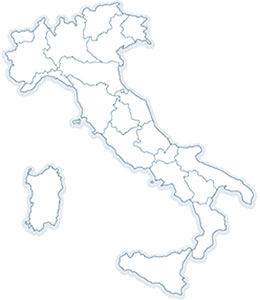


PADUA, THE CITY OF SAINT ANTHONY, AND ITS ARTISTIC TREASURES






Walking south of Arena Gardens you can visit the thirteenth century Church of Eremitani with Cappella Ovetari (Chapel of the Ovetari), decorated with beautiful frescoes by Mantegna. Musei Civici Eremitani (Eremitani Museums) are located close to the church and include an Archeological Museum, a Medieval and a Modern art museum.
Continuing south along Via Garibaldi and Via Cavour, you will find first Caffè Pedrocchi, an important meeting point for students and intellectuals during the nineteenth century featuring beautiful historical halls. Then, you will rich Palazzo Bo, home to the ancient University of Padua. Founded in 1222, this University was the place where many artists and scientists, such as Galileo and Copernicus, have studied, and where you can visit the interesting "Teatro Anatomico" and "Sala dei Quaranta". From here just a few steps and you get to the social and cultural hub of the city: Piazza della Frutta e delle Erbe.
The huge square of Piazza della Frutta e delle Erbe takes its name (literally, Square of Fruit and Herbs) after the markets that used to be held here. Here stands one of the most important and imposing buildings of the city: Palazzo della Ragione (pic n°6), built at the beginning of the thirteenth century and former home to the Courthouse. This remarkable building has a large hall decorated with lots of beautiful frescoes about astrology. Today, the hall is a kind of "crossway" between the two parts of the square.
Walking along Via Fiume, you will reach Piazza dei Signori, one of the most important squares of the city, which is embellished with two beautiful buildings, "Palazzo del Capitano" and "Loggia della Gran Guardia", and with the "Torre dell'Orologio" (Clock Tower).
From here, just a few steps again which will lead you to the main Cathedral of the city, dedicated to St. Mary of the Assumption (pic n°5), built in 1522 following a project of Michelangelo Buonarroti. Nearby you can visit the amazing Baptistery with lots of beautiful frescoes: look at the ceiling and you will be enchanted by the many angels and saints who are watching you!
Then head south and reach the second biggest square in Europe called Prato della Valle (pic n°3). The square consist of a large, green, elliptical isle, called "Isola Memmia", surrounded by a beautiful channel with 78 statues dedicated to important characters of the past.
Nearby the square you will find another religious landmark of the city, Basilica of Santa Giustina. Dedicated to the saint patron of Padua, this huge basilica dates back to the seventeenth century and features eight cupolas and 20 finely-decorated chapels.
Going back towards the north, you will cross the wonderful Botanic Gardens.
After this long tour, you deserve a bit of relaxing: the thing you definitely cannot miss is the famous aperitif called Spritz cocktail, which was invented here and in Venice.
Some pics of Padua:
Basilica of Sant'Antonio (pic n°1); Chapel of the Relics, Basilica of Sant'Antonio (pic n°2); Square Prato della Valle (pic n°3); Scrovegni Chapel (pic n°4); Cathedral St. Mary of the Assumption (pic n°5); Palazzo della Ragione, Piazza della Frutta e delle Erbe (pic n°6);
Id: 160
Tour: Padua, the city of Saint Anthony, and its artistic treasures
Category: Art City
Published by/Copyright: Touring-Italy.net
Location: Countryside
Region: Veneto , Italy
Hits: 6993



Click on a region to see all the tours for that area
